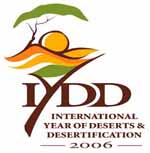Introduction.

The
Iullemeden Aquifer System (IAS), shared by
Mali, Niger and Nigeria, is a sub-regional aquifer system in West Africa
sahelian zones. The area is 500 000 km². The annual rainfalls mean values
change from North to South less than 100 mm to 800 mm.
The
Iullemeden Aquifer System is under environmental
threats caused by: 1) climate changes; 2) growing population pressure:
15 million in 2000, the double in 2025; 3) Groundwater over-exploitation: 50 million m3 in 1970, 180 million m3
in 2004; 4) human induced water pollution.
In order to address transboundary risks associated with
these threats in a strategic manner, the project adopts a risk-based management
approach. The project is aimed at establishment of a joint mechanism and
cooperative framework for: (a) identification of transboundary risks and
uncertainty issues; (b) formulation of joint risk mitigation and sharing
policy; and (c) joint policy implementation through a joint IAS legal and
institutional consultative mechanism. These components will be supported by
awareness raising, public participation and communication.
The main achievements are: 1) major transboundary risks
identified, 2) common data base elaborated (more than 17000
boreholes), 2) Geographic Information System developed, 3) Groundwater model
developed, 4) Iullemeden website elaborated, and 5) a clear
consensus on the need for, and on the structure and mandate of, the consultative
mechanism, and on the approach to be followed for its establishment.
The
perspectives are: 1) formulating the Strategic Action Programme,
2) improving data and information, 3) assessing and managing surface water and
groundwater, and 4) implementing the regional consultative mechanism.
The project is managed through the project steering
committee by the three governments with the Sahara and Sahel Observatory as the
Executing Agency.







 IW:LEARN.net
IW:LEARN.net